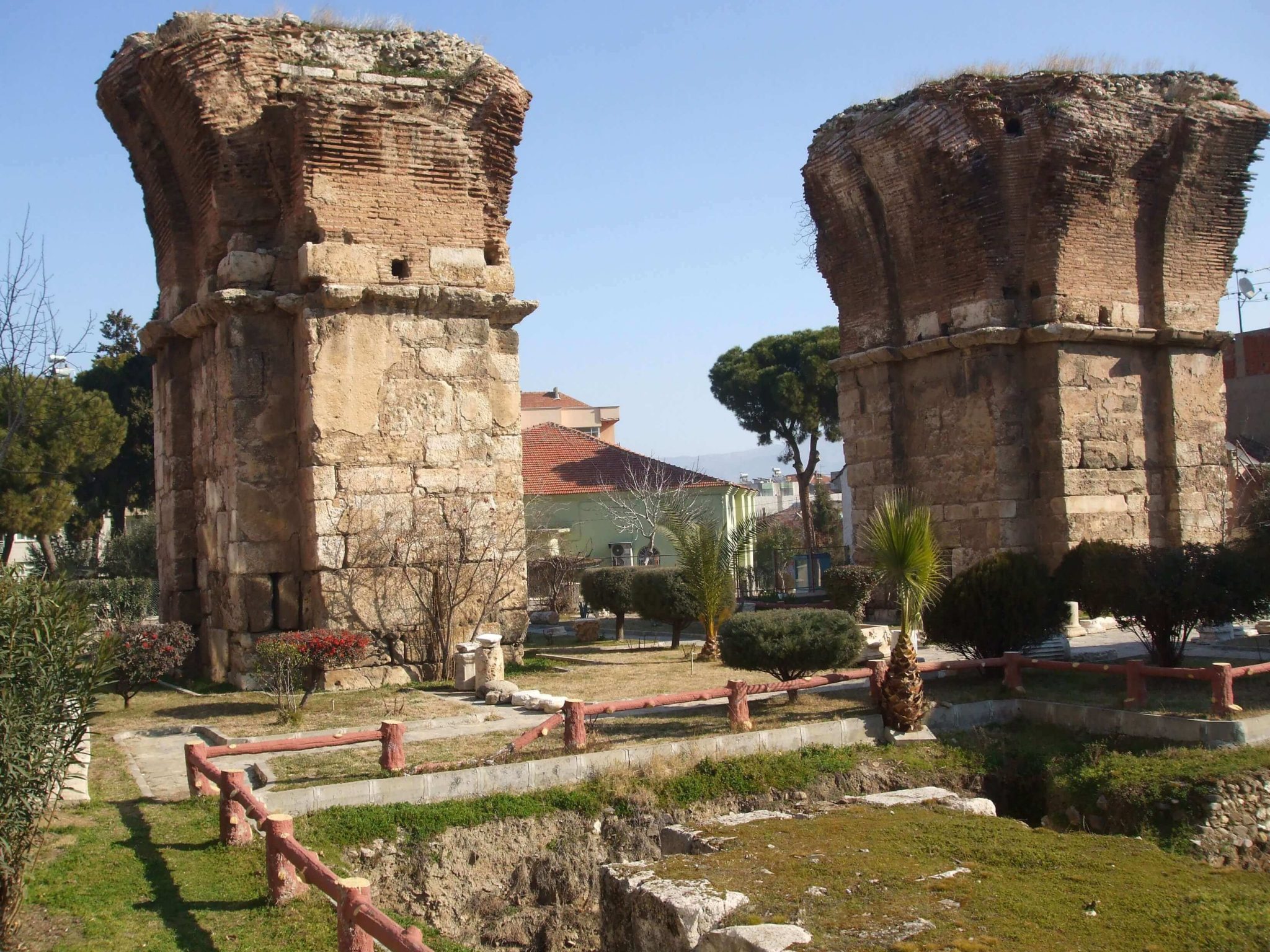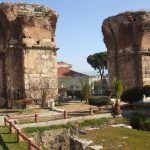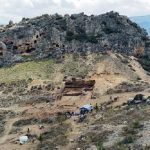HISTORY OF PHILADELPHIA
Philadelphia (Alasehir) is located about 30 mi/48 km southeast of Sardis. Its acropolis rests on a spur of the Tmolos range (Boz Daglari), with the basin of the Cogamus River (Alasehir Cayi) stretching below. The newest of the cities of the Seven Churches, Philadelphia was found-ed by the Pergamene king Attalos II (159-138 BC). When the Romans attempted to turn Attalos against his brother Eumenes II, he remained loyal, thereby earning the nickname “Philadelphus” (Polybius 30:1-3; 31.1; 32.1). The name of the city reflects the love between these brothers. The city’s coins featured a Macedonian shield, suggesting that Macedonians were early settlers in Philadelphia and that it had perhaps started as a military colony. Philadelphia was strategically situated along the imperial post road that ran from Rome through Troas, Pergamum, and Sardis on through to Tarsus and the East. Another road running eastward was an “open door” to Phrygia (Revelation 3:8). Because of its newness, the city had few religious traditions. An inscription from around 100 BC documents the presence of cultic altars in the city for at least ten gods and goddesses. Inscriptional evidence shows the city having a priest of Rome and Augustus as early as 27/26 BC. However, Philadelphia did not have an imperial cult temple until AD 214 when the emperor Caracalla visited the city and gave permission to build a temple, thus earning the right to call itself neokoros (“temple warden”). No archaeological evidence for a synagogue (“of Satan”; Revelation 3:9) has been found in the city. However, a 3C AD) inscription was found 10 mi/16 km east of Philadelphia mentioning a “synagogue of the Hebrews.” The discovery of a Greek inscription recording the donation of a fountain to the Jewish community suggests that a synagogue once existed in the city. The city was located near an earthquake-prone region called the Catacecaumene, the “burnt land.” Both Sardis and Philadelphia were devastated by an earthquake in AD 17. Strabo (12.8.18; 13.4.10) states that the daily aftershocks forced the residents to abandon the city and live temporarily in the surrounding countryside. The only crop that would grow in the volcanic soil was grapes, and vineyards dotted the countryside, even as they still do today. Philadelphia received a new name twice in the first century: first after the AD 17 earthquake to “Neocaesarea” in gratitude for the generosity of Tiberius, second to “Flavia” after the wife of Vespasian when the emperor gave financial assistance following a similar catastrophe.
Philadelphia was located within the administrative district (conventus) of Sardis in the 1C AD. Philadelphia was the sixth of the Seven Churches mentioned in Revelation 1-3. Ammia and Quadratus were Christian prophets who ministered in Philadelphia during the reign of Hadrian (Eusebius Church History 5:17). At Polycarp’s martyrdom in Smyrna in AD 156 eleven Christians from Philadelphia were also martyred with him (Martyrdom of Polycarp 19.1). The Montanist movement, which began in the late 2C AD, had its origins 1.5 mi/10 km east of Philadelphia at Ardabay. Montanus with his two prophetesses Prisca and Maximilla taught that the Paraclete (Holy Spirit) would come just before the Second Advent. Their center at Pepouza, which they believed to be the New Jerusalem (Revelation 3:12; 21:2), was recently discovered south of Usak near the village of Karayakuplu.
Source : Mark Wilson / Biblical Turkey



